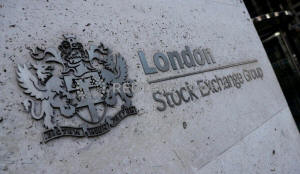Markets fall as virus woes strike again
 Send a link to a friend
Send a link to a friend
 [April 01, 2020]
By Marc Jones [April 01, 2020]
By Marc Jones
LONDON (Reuters) - World markets fell on
Wednesday as the coronavirus threat ensured an ugly start to the second
quarter for equities and commodities.
Traders headed for the safety of government bonds, the dollar and gold
as evidence continued to mount that the virus was sending the global
economy into a deep recession.
Tokyo's Nikkei slumped 4.5% after the worst plunge in factory activity
in almost a decade. The pan-European STOXX 600 sank 3.2% and Wall Street
futures dived 3.1% after a dire forecast of likely U.S. coronavirus
deaths.
"President Trump warning about two dreadful weeks ahead and 100,000 -
240,000 deaths in the coming months is definitely putting a negative
tone on the market," said Societe Generale strategist Kit Juckes. "It is
pretty risk-off out there. It is definitely a day of lower bonds yields,
falling equity indexes and tin hats."
Wall Street tumbled on Tuesday, capping the biggest quarterly fall since
1987 for the Dow Jones and the steepest for the S&P 500 since the
financial crisis. The fact it all happened in a month and from record
highs made it feel all the more brutal.

U.S. economic activity is likely to be "very bad" and the unemployment
rate could rise above 10% because of efforts to slow the spread of the
coronavirus, Cleveland Federal Reserve Bank President Loretta Mester
told CNBC.
There had been some glimmers of hope during Asian trading. China's
factory activity improved in March after plunging in February. It just
scraped into positive territory, beating analysts' expectations.
Blue-chip Chinese stocks failed to hold their gains, however, though
Australian shares bounced 3.5% as a slowdown in new coronavirus cases
there and rising iron ore prices lifted the market.
But Europe's early plunge meant MSCI's main gauge of world stocks was
down nearly 1% having slumped 22% since the start of the year.
The number of coronavirus infections globally headed toward 800,000. In
a positive development, Deutsche Bank analysts noted the global growth
in new cases was below 10% for two consecutive days, having exceeded
that rate for most of the past two weeks.
Health officials were not upbeat, however. A World Health Organization
official warned that even in the Asia-Pacific region, the epidemic was
"far from over."
OIL, TOIL AND TROUBLE
In currency markets, the dollar's safe-haven appeal saw it continue to
rose. The yen held its ground, but the euro dropped back under $1.10 as
traders braced for German manufacturing and European Union unemployment
figures.
[to top of second column]
|

Signage is seen outside the entrance of the London Stock Exchange in
London, Britain. Aug 23, 2018. REUTERS/Peter Nicholls

The pound fell to $1.2350 and plenty of commodity-exposed currencies
from the Australian dollar to the Russian rouble saw 1% losses.
"Don't fight the Fed" is the old adage, but markets seem to be doing
their best to do that anyway – a new set of Fed FX swap lines on
Tuesday was meant to reassure markets that the U.S. central bank was
there to ensure an adequate supply of dollars.
"In my view, markets have still not fully priced in the damage from
the coronavirus, with some people still talking about V-shaped
recovery," said Masahiko Loo, portfolio manager at Alliance
Bernstein in Tokyo.
"The U.S. and Europe are hit by the first wave now, but as you can
see in Asia, there could be more waves from re-imported cases. Human
psychology also does not quickly recover either after an experience
like this."
Demand for the guaranteed income of government bonds pushed the
yield on the benchmark 10-year U.S. Treasury note down to 0.63%.
Italian bond yields also held steady as the benefit of recent
European Central Bank measures meant the country - which has been
one of those hit hardest by the coronavirus - successfully sold 8.5
billion euros of debt.
Commodity markets were much rougher. Brent crude fell 5.81% to
$24.80 per barrel as the United States, Russia, and Saudi Arabia
jostled over a massive oversupply of oil.
Crude oil benchmarks ended the quarter with their biggest losses in
history. Both U.S. and Brent futures got hammered throughout March
by the pandemic and a Saudi-Russia price war.

Global demand has been cut sharply by travel restrictions.
Forecasters at major merchants and banks see demand slumping by 20%
to 30% in April, and for weak consumption to linger for months.
(Reporting by Marc Jones, editing by Larry King)
[© 2020 Thomson Reuters. All rights
reserved.] Copyright 2020 Reuters. All rights reserved. This material may not be published,
broadcast, rewritten or redistributed.
Thompson Reuters is solely responsible for this content. |